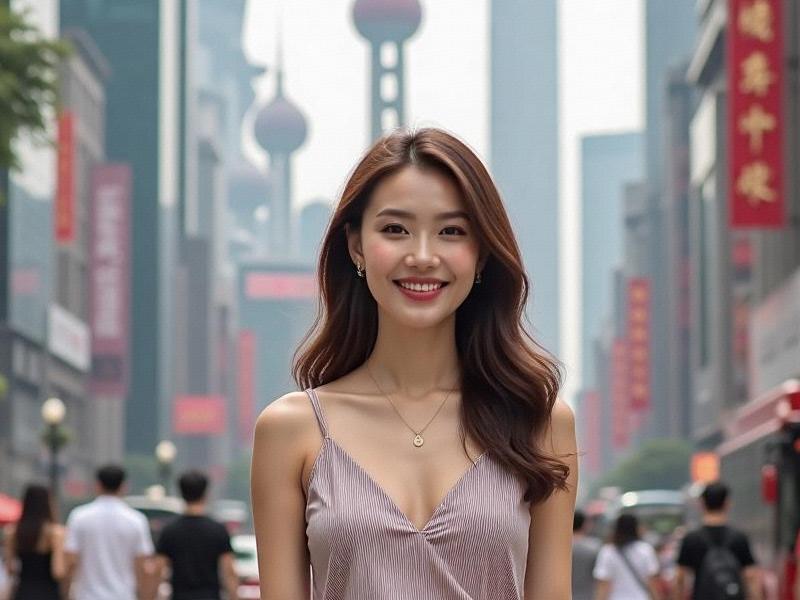Shanghai's Daughters: Redefining Chinese Femininity in the Global Era
⏱ 2025-06-08 00:24 🔖 阿拉爱上海419
📢0℃

Section 1: Historical Foundations of Shanghai Femininity
• The 1920s "Modern Girls" phenomenon in the Paris of the East
• Post-liberation era working women in state-owned enterprises
• Reform period (1980s-90s) entrepreneurs and "Shanghai Auntie" archetype
• Millennial digital natives shaping global perceptions
Section 2: Professional Landscape (2025 Data)
• 41.7% of fintech executives in Shanghai are female (national average: 28.3%)
• Women-led startups receive 35% of Series A funding in the city
• Average salary gap: 12% (vs. 22% nationally)
上海品茶网 • Dominance in emerging fields: AI ethics, sustainable finance, cultural IP development
Section 3: Fashion as Cultural Statement
• Hybrid styles blending qipao silhouettes with techwear
• Rise of homegrown designer labels like Comme Moi and Ms Min
• "Second-hand luxury" movement reducing fashion waste by 38%
• Beauty standards evolution: from porcelain skin to "healthy glow" aesthetics
Section 4: Social Architectures
上海花千坊龙凤 • Marriage rates decline to 48% among women aged 25-34
• "Single by choice" communities growing 27% annually
• New parenting models: professional co-ops and shared nanny services
• Digital nomadism: 18% of female professionals work remotely from abroad
Section 5: Cultural Production
• Women direct 43% of Shanghai's contemporary art exhibitions
• Literary scene dominated by female authors exploring urban identity
• Food culture revolution led by female chef-entrepreneurs
上海龙凤419 • Wellness industry pioneers creating China's answer to Goop
The Next Decade
Emerging trends among Gen Z:
• "Quadrilingualism" adding French/Japanese to core languages
• Micro-influencers focusing on niche expertise vs. general lifestyle
• "Quiet luxury" replacing conspicuous consumption
• Increased political participation at district levels
Shanghai women continue to redefine possibilities, creating a template for modern Asian femininity that balances global citizenship with cultural rootedness.
Shanghai's Renaissance: A Journey Through the City's Modern TransformationShanghai's Entertainment Clubs: A Thriving Nightlife SceneThe Shanghai Spark: How Women Are Redefining China's Global CityShanghai 2045: The Rise of China's Smartest MegacityShanghai's Thriving Entertainment Clubs: A Nightlife RenaissanceSilk & Silicon: The Dual Identity of Shanghai's Modern WomenA Glimpse into the Vibrant Nightlife of Shanghai: An Overview of Shanghai Entertainment VenuesShanghai & Yangtze Delta: The Quantum-Climate Civilization PrototypeA Comprehensive Exploration of Shanghai and Its ProspectsShanghai's Semicircle: A Journey Through the Urban and Rural Divide
Shanghai 2025: Where Ancient Water Towns Meet Quantum Computing - The Making of a 22nd Century CityThe Shanghai Feminine Code: How China's Cosmopolitan Women Are Rewriting Beauty StandardsShanghai Life: A Cultural and Entertainment HubShanghai Femininity 3.0: How China's Most Cosmopolitan Women Are Rewriting the RulesThe Quantum Delta: How Shanghai and Its Neighbors Are Building the World's Most Advanced City ClusterShanghai 2045: The Making of a Neo-Futurist MegacityShanghai 2030: The Rise of the 90-Minute Economic EmpireShanghai's Daughters: Redefining Chinese Femininity in the Global EraThe Shanghai Woman Paradox: Traditional Grace Meets Modern Ambition in China's Global CityShanghai BEAUTIES: Luring the World with an Allure Beyond Beauty

